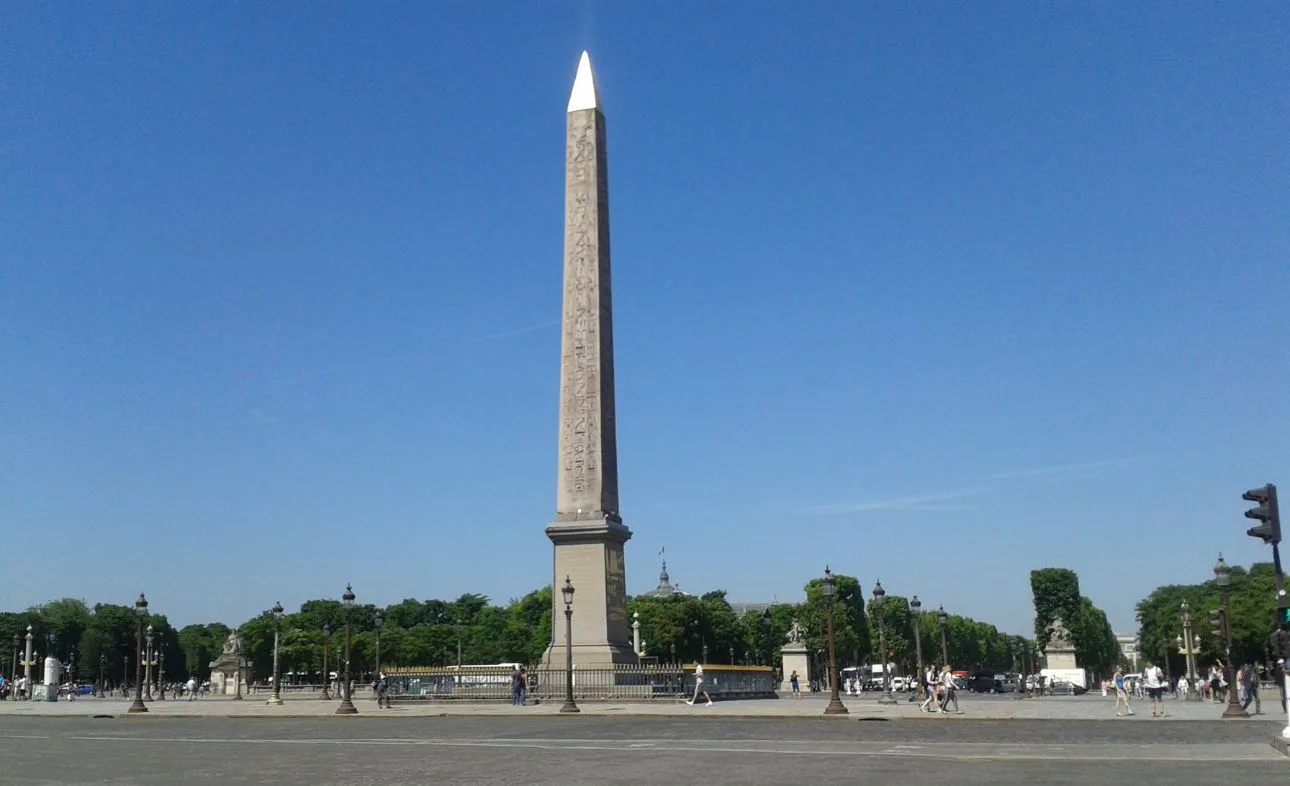Nearly two hundred years after its prominent installation in Paris’ Place de la Concorde, the 3,300-year-old Luxor Obelisk continues to offer new perspectives on ancient Egyptian civilisation and the mechanisms of royal propaganda.
Jean-Guillaume Olette-Pelletier, a French Egyptologist and expert in hieroglyphic cryptology affiliated with the Catholic University of Paris, has recently uncovered seven previously unrecorded inscriptions situated near the summit of the obelisk. This notable discovery was made possible during a restoration project undertaken in December 2021, and it provides fresh insight into the monument’s original function and the era of Pharaoh Ramses II.
The restoration required scaffolding to be erected around the obelisk, which enabled Olette-Pelletier to access and examine its upper sections in unprecedented detail. His close inspection led to the identification of hieroglyphs arranged in a horizontal format—an unusual deviation from the customary vertical alignment. This novel angle facilitated the detection of embedded messages concealed within the existing script, crafted using a highly sophisticated form of hieroglyphic cryptography.
According to Olette-Pelletier, only a select group of specialists across the globe possess the requisite knowledge to interpret this unique “3D” method of reading.
Originally one of a pair erected at the Luxor Temple in Upper Egypt during the 13th century BCE under the rule of Ramses II, this particular obelisk was transported to France in 1830 as a diplomatic offering from the then Egyptian viceroy. Its original position along the Nile held considerable architectural and symbolic importance within the context of the temple complex.
Olette-Pelletier’s study revealed that one of the newly uncovered messages had been deliberately designed to be legible from a 45-degree angle. This vantage point was strategically chosen to address the noble visitors arriving by boat during the annual Opet festival, a significant celebration dedicated to the vital energies of the deity Amun.
The content of these hidden inscriptions functions as a form of powerful royal propaganda, glorifying the divine nature of Ramses II and exhorting observers to present offerings to placate the gods.
Among the more striking discoveries is a concealed depiction of bull horns on Ramses II’s headdress, symbolising the “ka,” or “divine vital essence,” accompanied by a rectangle denoting “to appease.” Taken together, these symbols convey a message urging tributes to the “ka-force of Amun.” In total, Olette-Pelletier identified seven such encrypted messages across the obelisk’s surfaces, each reinforcing the narrative of the pharaoh’s sanctified authority and rightful rule.
Ramses II, who reigned for an extraordinary 66 years, was renowned for his ambitious public relations strategies, including the widespread construction of monuments designed to affirm his dominance. Olette-Pelletier’s findings underscore the complex and deliberate methods used by ancient Egyptian rulers to project their legitimacy and spiritual supremacy.
The research illustrates the deep integration of visual and textual elements in ancient Egyptian communication and is scheduled for publication in ENiM (Egypt of the Nile and Mediterranean).
This exceptional discovery serves as a compelling reminder that even the most thoroughly examined historical artefacts may still harbour hidden narratives, awaiting revelation through diligent study and expert interpretation. The Luxor Obelisk has been a fixture of the Parisian cityscape for nearly two centuries and continues to enrich our understanding of ancient Egypt’s cultural sophistication and political acumen.
